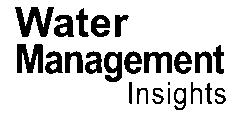In Central Kalimantan, the Dadahup lowland irrigation area is undergoing significant transformation as researchers seek to optimize its operations to combat the dual threats of flooding and drought. This region, identified as a vital food estate, has faced challenges due to ineffective water management, resulting in land cover changes and reduced agricultural productivity. The recent study published in ‘Jurnal Teknik Hidraulik’ by Asril Zevri from the Ministry of Public Works and Housing highlights innovative strategies aimed at enhancing water management systems in this critical area.
The research focuses on a systematic approach to managing water levels in the irrigation channels. By establishing a minimum water level of 60 cm during the dry season and a maximum of 10 cm during the rainy season, the study proposes a method to maintain optimal conditions for irrigation. “Our goal is to ensure that the water management systems can effectively support agricultural activities while preventing the adverse effects of extreme weather conditions,” Zevri stated.
Utilizing hydraulic simulations based on the tidal patterns of the Barito River, along with telemetry data on rainfall and water quality, the study outlines how adjusting the sluice gates can significantly improve both water quantity and quality. The findings suggest that the primary and secondary sluice gates should be opened when water levels exceed +0.5 m in the dry season to ensure adequate supply, and at +1.1 m during the rainy season for effective drainage. Conversely, closing these gates below +0.5 m is essential to preserve water levels and maintain quality.
This research has far-reaching implications for the water, sanitation, and drainage sector. By implementing these optimized management practices, not only can agricultural productivity in the Dadahup area be enhanced, but it can also serve as a model for similar lowland irrigation systems across Indonesia and beyond. The ability to adapt to changing climatic conditions while ensuring food security is critical for the region’s economy.
As the water management sector continues to evolve, studies like Zevri’s pave the way for innovative solutions that address the pressing challenges of water scarcity and flooding. The integration of hydraulic simulations and telemetry monitoring represents a significant step forward in the field, demonstrating how technology can be harnessed to create sustainable water management practices.
For further insights into this groundbreaking research, visit the Ministry of Public Works and Housing at lead_author_affiliation. The study’s findings and methodologies are detailed in the article published in ‘Jurnal Teknik Hidraulik’, which translates to ‘Journal of Hydraulic Engineering’.
